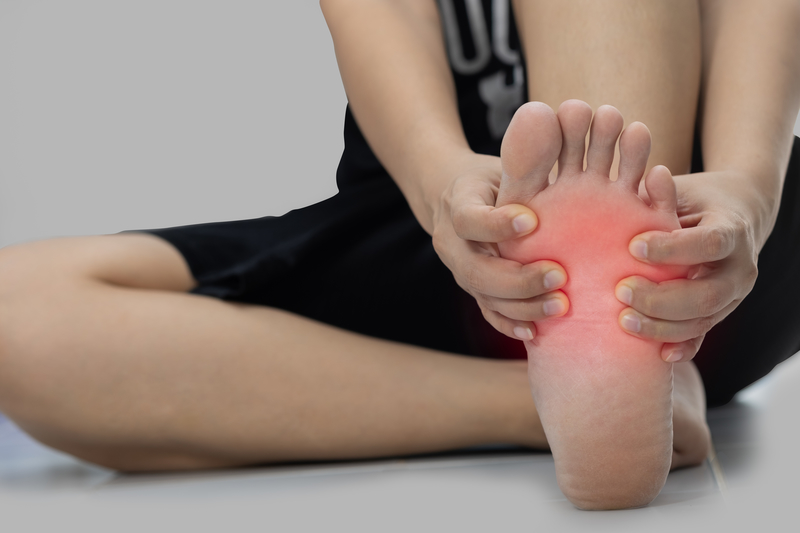10 Signs of Poor Circulation (and 13 ways to boost blood flow)

Do you often notice you have cold hands or feet? Do you (or your partner) struggle to get or maintain an erection? Do you ever feel like you’re standing on “pins and needles”? These are just a few common signs of poor circulation. There are more, which you’ll learn below. And we’ll also reveal 8 common causes of poor circulation as well as 13 ways to help keep the blood flowing.
Here’s to your ticker!
Circulatory System 101
On the average day, a healthy circulatory system transports roughly 2,000 gallons of blood through its 60,000-ish miles of blood vessels. That’s absolutely remarkable. Yet, while many view the circulatory system—aka the cardiovascular system—as a highway-and-road system designed to transport blood, it is far more complex and nuanced. It is vital for good health and has obvious life-or-death implications.
In its most basic sense, the circulatory system, which is a vast, closed network of organs and vessels, moves blood around the body. To that end, it is responsible for delivering oxygen, nutrients, hormones, and immune factors to tissues and cells. It also carries away waste products (like carbon dioxide).
The circulatory system is made of three primary components:
- The cardiovascular component, which includes the heart, blood, and blood vessels.
- The pulmonary component, which is a short “loop” from the heart to the lungs (where the blood is oxygenated) and back again.
- The systemic component, which is the part of the system that includes the network of veins, arteries, and blood vessels that transports to and from the heart.
10 Signs of Poor Circulation
When the circulatory system is working as it should, you probably don’t think twice about it. Blood is flowing freely and efficiently, your cells are getting the oxygen, nutrients, and hormones they need, and metabolic waste is being cleaned up.
It’s when things aren’t running so smoothly when most of us start taking notice. Not surprisingly, when circulation issues arise—that is, some degree of poor, insufficient blood flow—problems ensue.
Given the gravity of the circulatory system, these problems can obviously become very serious—life-threatening, in fact. Here are some common warning signs of poor circulation to watch for:
- Cold hands or feet
- Numb or “pins and needles” feelings in hands or feet
- Blue color in legs, toes, and/or fingers
- Difficulty getting or keeping an erection
- Slower wound healing
- Swollen feet or ankles
- Spider/varicose veins
- Muscle cramping and/or discomfort
- Fatigue and lackluster energy levels
- Lack of stamina
Keep in mind that some of these signs may be multi-factorial. In other words, poor circulation may not be the only cause, and it may not be a factor at all.
Of course, there are much more severe consequences of poor circulation, including cardiovascular disease and death. In other words, signs of poor circulation should not be taken lightly. If you notice or suspect you have signs of poor circulation, it’s imperative you schedule a visit with the appropriate member of your healthcare team.
8 Causes of Poor Circulation
While we’re going to be zeroing in on some of the common poor health habits behind the signs of poor circulation, it’s crucial to point out that there are various medical conditions (such as hypertension, blood clots, arterial disease, and type 2 diabetes) that may cause or co-exist with poor circulation. If you are at risk for or being treated for any medical condition, I urge you to consult with your doctor before making any dietary, exercise, and/or lifestyle changes.
I also want to point out that there may be a genetic component at play in some instances of poor circulation. For example, there’s some evidence that variants of the NOS3 gene (involved in the production of nitric oxide) may be related to circulatory system issues. 1 When it comes to epigenetics (the study of interactions between our genes and our environment), it’s best to work with a highly-qualified specialist.
With those qualifiers under your belt, here are 8 poor health habits that often play a role in the signs of poor circulation:
- Smoking
- Drinking alcohol in excess
- Poor diet
- Insufficient exercise
- Sitting/standing for long periods of time (e.g., on an airplane, in a car, at a desk)
- Being overweight
- Insufficient and/or poor-quality sleep
- Poor stress management
13 Ways to Improve Poor Circulation
When it comes to diet, there’s an ongoing debate about which is the most heart healthy. At this stage in the game, a Mediterranean-style diet seems to be leading the pack. This shouldn’t come as too much of a surprise considering this pattern of eating is loaded with circulation-friendly nutrients and heart-healthy foods. It includes extra virgin olive oil, dark leafy greens and other vegetables, fresh fruits, legumes, whole grains, nuts, seeds, oily fish, and even red wine. (And while it’s not about single foods or isolated nutrients, don’t forget about beets, known as a “circulation superfood.”)
A recent study comparing a Mediterranean-style diet to a plant-based (vegan) diet found that while both led to improved markers of heart health, a Mediterranean diet led to more pronounced improvements in circulation (such as increases in vasodilation and nitric oxide bioavailability). 2 In reality, consuming primarily whole foods (with a heavy emphasis on plant-based foods) is a pretty safe bet for most people.
The corollary is that what you don’t eat is also important. You see, on the other side of the heart-healthy omega-3 fatty acids (which have anti-inflammatory and vasodilatory properties) are omega-6 fatty acids, which promote blood clotting and are pro-inflammatory.
Overconsumption of omega-6 fatty acids can lead to increases in blood viscosity and vasoconstriction. 3 In other words, diets high in omega-6 fats are likely to be a contributor to poor circulation.
If you want to avoid the signs of poor circulation, then you’ll also want to make sure you limit your consumption of refined carbohydrates, like added sugar and refined grains. After all, overconsuming processed foods made with refined carbohydrates is a surefire recipe to poor glycemic control and poor glycemic variability, which can put you on the fast track to circulation problems. 4, 5
Ever wonder why aerobic exercise is often called “cardio?” It’s good for your circulatory system, of course! According to the Cleveland Clinic (and virtually every other credible health organization), “Regular exercise is the single most important key to heart health. And it is FREE.” The benefits of regular exercise are far too numerous to list. And what’s most relevant is that many of the beneficial adaptations brought on are mediated through the circulatory system (e.g., improved oxygen uptake, increased cardiac output, increased capillary density).
According to a paper published in the World Journal of Cardiology, “It is an irrefutable notion that exercise helps deter cardiovascular morbidity and mortality.” 7 And this goes for all forms of exercise (not just slow-go cardio).
Generally speaking, higher levels of fitness equal better cardiovascular health. The traditional recommendation is to accumulate 30 minutes of aerobic activity daily (150 minutes/week). In addition to physical activity, stretching (particularly static stretching) increases arterial flexibility, which contributes to improved circulation. 8
While there’s little debate that exercise is a linchpin for a finely tuned circulatory system, that’s only part of the battle. Considering that regular exercise alone is probably not enough to offset the potential harmful effects of being sedentary (such as increased arterial stiffness) so much of the day, increasing overall physical activity is another linchpin for boosting circulation.
In fact, you’ve probably heard the recommendation to “sit less, move more.” This is an advisory the American Heart Association recently endorsed given the prevalence of sedentary behavior—like sitting for long periods of time—and its connection to circulatory problems and cardiovascular disease. 9 Personally, I prefer the more complete message to “walk more, sit less, and exercise,” especially given the many benefits of walking, such as improving circulation and glycemic variability. 10
While it’s a bit of a contentious topic and one that’s open to debate, there is some convincing evidence that moderate alcohol consumption can have beneficial effects on circulation. Of course, when it comes to alcohol, as doctors from St. Luke’s Mid America Heart Institute in Kansas City, Missouri, put it in the title of a paper published in the peer-reviewed medical journal Mayo Clinic Proceedings, “Alcohol and cardiovascular health: the dose makes the poison…or the remedy.” 11
Among the potential heart-health benefits of moderate alcohol consumption includes supporting healthy endothelial function (the endothelium is made up of cells that line the insides of the heart and blood vessels), blood pressure, and insulin sensitivity (which ties into glycemic balance). Of course, this doesn’t mean non-drinkers should start drinking, and it’s also not a permission slip to binge drink.
Along those lines, among males aged 15 – 59 years old, alcohol abuse is the leading risk factor for premature death. Most researchers agree that a small (5-ounce) glass of red wine before or during the evening meal may be ideal. Speaking of red wine, research has shown that compounds found in red wine may improve circulation by combating oxidative stress, supporting healthy levels of inflammation, increasing nitric oxide production, and decreasing platelet aggregation. 12 Regular consumption of green tea and coffee may also be supportive of the circulatory system.
Despite most of us knowing how important sleep is for us, it’s estimated that more than 50% of U.S. adults don’t get the National Sleep Foundation’s recommended 7 – 9 hours of sleep per night. Considering the far-reaching effects of sleep (which plays a vital role in good health and well-being), it may come as little surprise that inadequate sleep can have severe consequences on the circulatory system.
While too little (and too much) sleep has been associated with increased prevalence and incidence of more serious cardiovascular diseases, including hypertension, coronary heart disease, and stroke, short-term sleep deprivation has been shown to acutely contribute to poor circulation and impaired endothelial function. 13,14 There are many factors that contribute to getting a good night’s rest, and a good place to start is to take inventory of your sleep hygiene habits.
According to Dr. Joel Dimsdale in a paper published in the Journal of the American College of Cardiology, “There is an enormous amount of literature on psychosocial stress and cardiovascular disease.” 15 Along those lines, stress can both directly and indirectly influence the function of the circulatory system.
For instance, stress (subjective as it may be) activates the sympathetic nervous system, which initiates a cascade of cardiovascular effects and influences circulation (e.g., peripheral vasoconstriction, increased heart rate, increased blood pressure). Stress also influences behaviors, such as sleep, diet, exercise, alcohol consumption, smoking, and more, and as mentioned, those variables can have profound effects on circulation.
Regardless of the how or why, stress management is important for supporting healthy circulation. Along those lines, yoga, meditation, deep breathing exercises, and forest bathing (i.e., taking a walk outdoors in nature) are all effective stress-management techniques. Not surprisingly, they have all been shown to be beneficial to the circulatory system. 16, 17, 18, 19
One of the most overlooked (and one of my personal favorite) ways to boost circulation is hitting the sauna. Believe it or not, several of the benefits of frequent sauna bathing (also called “thermotherapy” or “hyperthermia”) parallel those adaptations to regular aerobic exercise. For example, thermotherapy increases nitric oxide bioavailability (which increases vasodilation) and blood flow. Said differently, sauna bathing opens the gates to better circulation and facilitates the movement of more traffic. 20
Graduated compression stockings, or more simply, compression socks, have long been deemed an effective strategy to improve circulation, which they do by increasing the volume and rate of venous return. 22 Basically, compression socks act like a muscle that helps push blood (and lymph) from the lower extremities back to the heart.
The stockings exert the greatest degree of pressure at the ankle, with the level of compression gradually decreasing up the leg. The pressure gradient ensures that blood flows upward toward the heart instead of refluxing downward toward the foot or laterally into the superficial veins.
Signs of Poor Circulation: A Recap
While many of the signs of poor circulation are tolerable, they shouldn’t be taken lightly. They could be a premonition of worse things to come. As always, if you notice or suspect you have any signs of poor circulation, it’s imperative you schedule a visit with your healthcare team, and work with them to nip the common poor health habits in the bud and implement the strategies mentioned above to likely begin boosting circulation and supporting the cardiovascular system.








